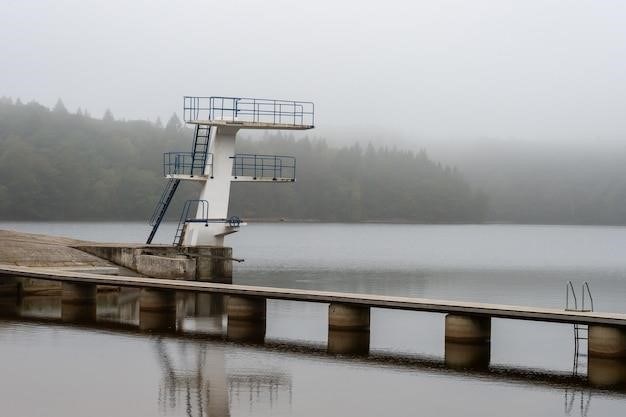seattle stormwater manual

Seattle Stormwater Manual Article Plan
This article will provide a comprehensive overview of the Seattle Stormwater Manual, a vital resource for understanding and managing stormwater in the city. It will delve into the history, current state, and future directions of Seattle’s stormwater system, highlighting key components, challenges, and solutions. The article will also explore best practices, regulations, public engagement, and case studies showcasing successful stormwater projects.
Introduction
Seattle, a city known for its lush greenery and abundant rainfall, faces unique challenges in managing stormwater runoff. The Seattle Stormwater Manual serves as a comprehensive guide for addressing these challenges, providing a framework for sustainable stormwater management practices. This manual is an essential resource for professionals, developers, and residents alike, promoting a holistic approach to stormwater mitigation and ensuring a healthy and resilient urban environment.
Overview of Seattle’s Stormwater System
Seattle’s stormwater system is a complex network of infrastructure designed to collect, convey, and treat rainwater runoff. This system plays a crucial role in protecting water quality, mitigating flooding, and managing urban development. The system comprises a variety of components, including pipes, ditches, culverts, detention ponds, and green infrastructure, all working together to manage stormwater effectively.
History and Development
Seattle’s stormwater system has evolved significantly over time, adapting to the city’s growth and changing environmental concerns. Early systems focused on simple drainage, but as the city developed, more sophisticated infrastructure was needed to manage increasing runoff volumes. The development of the Seattle Stormwater Manual reflects this evolution, providing guidance and regulations for stormwater management that are constantly updated to address new challenges.
Key Components
Seattle’s stormwater system is a complex network of infrastructure designed to collect, convey, and treat stormwater runoff. Key components include⁚ storm drains, pipes, ditches, culverts, retention ponds, infiltration basins, and green infrastructure elements. These components work together to manage stormwater effectively, reducing flooding, erosion, and pollution while enhancing water quality.
Challenges and Goals
Seattle’s stormwater system faces numerous challenges, including increased urbanization, aging infrastructure, climate change, and growing concerns about water quality. The primary goals of the Seattle Stormwater Manual are to address these challenges by promoting sustainable stormwater management practices, reducing flooding risks, improving water quality, and fostering community engagement in stormwater stewardship.
Stormwater Management Practices
The Seattle Stormwater Manual outlines a wide range of stormwater management practices designed to effectively manage stormwater runoff and mitigate its negative impacts. These practices encompass both traditional and innovative approaches, with a strong emphasis on green infrastructure and low impact development (LID) techniques.
Green Infrastructure
The Seattle Stormwater Manual strongly promotes the use of green infrastructure, which utilizes natural and nature-based solutions to manage stormwater. These solutions include rain gardens, bioswales, green roofs, and permeable pavements, all of which help to infiltrate, filter, and slow down stormwater runoff.
Low Impact Development (LID)
The Seattle Stormwater Manual emphasizes Low Impact Development (LID) practices, which aim to mimic natural drainage patterns and minimize the impact of development on stormwater runoff. LID techniques include using smaller impervious surfaces, managing runoff on-site, and incorporating vegetation to slow down and filter stormwater.
Conventional Stormwater Systems
The Seattle Stormwater Manual also addresses conventional stormwater systems, such as pipes, ditches, and retention ponds. These systems are designed to collect and convey stormwater to treatment facilities or discharge points. The manual provides guidance on the design, operation, and maintenance of these systems to ensure their effectiveness.
Best Management Practices (BMPs)
The Seattle Stormwater Manual emphasizes the use of Best Management Practices (BMPs) to manage stormwater runoff. BMPs are techniques and structures that reduce the volume, velocity, and pollution of stormwater runoff. The manual provides detailed information on various BMPs, including their design, installation, and maintenance.
Regulations and Policies
The Seattle Stormwater Manual outlines the regulatory framework governing stormwater management in the city. This includes the Seattle Municipal Code, which sets standards for stormwater runoff, and the stormwater permitting process, which ensures compliance with these regulations. The manual also provides information on enforcement and compliance measures to ensure effective implementation of stormwater management practices.
Seattle Municipal Code
The Seattle Municipal Code (SMC) contains specific chapters dedicated to stormwater management, outlining requirements for stormwater runoff control, treatment, and discharge. These regulations aim to protect water quality, reduce flooding, and promote sustainable land use practices.
Stormwater Permitting
The Seattle Stormwater Manual outlines the permitting process for various stormwater-related activities, including new development, redevelopment, and infrastructure projects. Permits are required to ensure compliance with stormwater regulations and to minimize the environmental impact of construction and land use activities.
Enforcement and Compliance
The Seattle Stormwater Manual outlines the city’s enforcement mechanisms for ensuring compliance with stormwater regulations. This includes inspections, monitoring, and potential penalties for violations. The manual emphasizes the importance of collaboration between the city and property owners to achieve effective stormwater management.
Public Involvement and Education
The Seattle Stormwater Manual recognizes the crucial role of public engagement and education in achieving sustainable stormwater management. It emphasizes the importance of involving residents, businesses, and community groups in decision-making processes and promoting awareness about the benefits of responsible stormwater practices.
Community Engagement
The Seattle Stormwater Manual encourages active community engagement in stormwater management. It emphasizes the importance of collaborative efforts between the city, residents, and various stakeholders to develop and implement effective solutions. Community groups, neighborhood associations, and local organizations play a vital role in sharing information, raising awareness, and advocating for sustainable stormwater practices.
Outreach Programs
The Seattle Stormwater Manual promotes a variety of outreach programs designed to educate the public about the importance of stormwater management. These programs utilize diverse channels, including workshops, webinars, online resources, and community events, to engage residents and businesses in understanding stormwater issues, best practices, and available resources.
Educational Resources
The Seattle Stormwater Manual provides a comprehensive suite of educational resources to support public understanding and engagement. These resources include online guides, fact sheets, videos, and interactive tools that offer detailed information on stormwater management concepts, regulations, best practices, and available programs.
Case Studies and Success Stories
The Seattle Stormwater Manual showcases numerous case studies and success stories that demonstrate the effectiveness of various stormwater management practices. These examples highlight innovative projects, community partnerships, and lessons learned from real-world implementations, providing valuable insights for future stormwater initiatives.
Examples of Successful Stormwater Projects
The Seattle Stormwater Manual features a diverse range of successful stormwater projects, including green roofs, rain gardens, bioswales, and permeable pavements. These projects illustrate how innovative design and implementation can effectively manage stormwater runoff, improve water quality, and create vibrant urban landscapes.
Lessons Learned and Best Practices
The Seattle Stormwater Manual emphasizes the importance of collaboration, community engagement, and ongoing monitoring in successful stormwater management. It shares valuable lessons learned from past projects, highlighting best practices for design, construction, and long-term maintenance.
Future Directions and Innovations
The Seattle Stormwater Manual is a living document, constantly evolving to address emerging challenges and embrace new technologies. It explores innovative solutions, including green infrastructure advancements, climate change adaptation strategies, and sustainable practices to enhance resilience and protect the city’s water resources.
Emerging Technologies
The Seattle Stormwater Manual recognizes the importance of integrating emerging technologies to optimize stormwater management. This includes innovative solutions like real-time monitoring systems, predictive modeling tools, and advanced filtration technologies to improve efficiency, reduce costs, and enhance environmental protection.
Climate Change Adaptation
The Seattle Stormwater Manual emphasizes the need for climate change adaptation strategies in stormwater management. This involves planning for increased rainfall intensity, sea level rise, and other climate-related impacts, ensuring the city’s stormwater infrastructure is resilient and capable of handling future challenges.
Sustainability and Resilience
The Seattle Stormwater Manual promotes sustainable and resilient stormwater management practices, aiming to minimize environmental impacts, conserve resources, and enhance the overall health of the city’s ecosystems. It emphasizes the use of green infrastructure, water conservation, and innovative technologies to create a more sustainable and resilient stormwater system.
Conclusion
The Seattle Stormwater Manual serves as a comprehensive guide for managing stormwater in the city, promoting sustainable practices, protecting water quality, and enhancing urban resilience. By embracing the principles outlined in this manual, Seattle can effectively manage stormwater, mitigate flooding risks, and create a healthier and more sustainable city for generations to come.
Summary of Key Points
The Seattle Stormwater Manual emphasizes the importance of a multi-faceted approach to stormwater management, encompassing green infrastructure, low impact development, and conventional systems. It highlights the role of regulations, public engagement, and innovative technologies in achieving sustainable stormwater management.

Call to Action
The Seattle Stormwater Manual serves as a blueprint for a sustainable and resilient future. It calls upon residents, businesses, and government agencies to actively participate in implementing its recommendations, ensuring a cleaner and healthier environment for generations to come.





